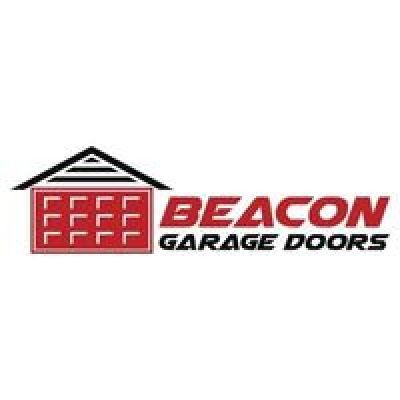Undertaking a home renovation can be an exciting yet daunting endeavor, especially for homeowners in Australia, where the real estate market is both dynamic and unpredictable. While many Australians dream of transforming their spaces into perfect sanctuaries, they often overlook the hidden costs that can derail even the most meticulously planned projects. This article uncovers seven unexpected expenses that can catch homeowners off guard during renovations, and why understanding these costs is crucial for financial planning and project success.
1. Regulatory Compliance and Permits
One of the first hidden costs that Australian homeowners encounter is the requirement for permits and regulatory compliance. The Australian Competition & Consumer Commission (ACCC) mandates that any significant structural changes or extensions require council approval. Failing to obtain the necessary permits can lead to fines or even the reversal of completed work.
Data Insight: According to the Australian Bureau of Statistics, 68% of home renovation projects in 2022 required some form of regulatory approval, with permit costs averaging $1,200.
Homeowners should budget for these expenses and factor in the time it takes to secure approvals, which can delay project timelines and increase costs indirectly.
2. Asbestos Removal
Many older Australian homes contain asbestos, a hazardous material that must be removed by licensed professionals. The discovery of asbestos during renovations can lead to significant additional costs.
Case Study: A Melbourne couple discovered asbestos in their 1950s home during a kitchen remodel. The removal process added $5,000 to their renovation budget and delayed completion by three weeks, underscoring the importance of thorough inspections before commencing work.
3. Structural Issues
Unforeseen structural issues, such as foundational damage or outdated wiring, often surface during renovations. Addressing these problems is critical for safety and compliance but can also inflate budgets.
Financial Impact: According to CoreLogic, the average cost to rectify structural issues during renovations is approximately $10,000, a figure that can significantly alter initial budget projections.
4. Rising Material Costs
The global pandemic has led to disruptions in supply chains, causing material costs to soar. Australia has not been immune to these fluctuations, impacting renovation budgets across the country.
Market Trend: The Reserve Bank of Australia noted a 15% increase in the cost of building materials in 2023, driven by supply chain challenges and increased demand.
Homeowners are advised to secure fixed-price contracts where possible to mitigate the risk of escalating costs during their projects.
5. Labour Shortages
The Australian construction industry is currently experiencing a labor shortage, leading to increased labor costs and project delays. Skilled tradespeople are in high demand, and their fees have risen accordingly.
Industry Insight: A report by the Housing Industry Association revealed that labor costs have increased by 12% over the past year, with electricians and plumbers commanding even higher premiums.
Homeowners should anticipate potential delays and budget for higher labor costs, especially for specialized work.
6. Unplanned Design Changes
Scope creep is a common issue during renovations, where homeowners decide to make additional changes as the project progresses. These changes can significantly increase both time and cost.
Expert Opinion: Design consultant Sarah Johnson advises, "Incorporating a 20% contingency in the renovation budget for unforeseen design changes can prevent financial strain and keep the project on track."
7. Post-Renovation Costs
Upon completion, homeowners often face unexpected expenses such as landscaping, new furniture, or decorating. These additional costs can surprise homeowners who have exhausted their budgets on primary renovations.
Pro Tip: It is wise to allocate a portion of the budget for post-renovation expenses to avoid financial stress after project completion.
Pros vs. Cons of Renovation Planning
When planning a renovation, it's essential to weigh the pros and cons:
- Pros: Increased property value, enhanced living space, personal satisfaction.
- Cons: Budget overruns, project delays, potential regulatory hurdles.
Common Myths & Mistakes
- Myth: "DIY renovations are always cheaper." Reality: Professional work often prevents costly mistakes and ensures compliance.
- Myth: "Renovations always increase property value." Reality: Poorly executed renovations can decrease value or lead to legal issues.
- Myth: "Permits are unnecessary for small changes." Reality: Even minor changes can require permits, depending on local regulations.
Future Trends & Predictions
The future of home renovations in Australia is likely to be shaped by sustainability and technology. As the country moves towards net-zero emissions by 2050, incorporating eco-friendly materials and energy-efficient designs will become standard practice. Furthermore, advancements in smart home technology will drive demand for tech-integrated renovations, offering both convenience and energy savings.
Conclusion
Understanding the hidden costs of home renovations is crucial for successful project management and financial planning. By anticipating these expenses, Australian homeowners can make informed decisions, avoid budget blowouts, and achieve their renovation goals. Whether you're planning to renovate a single room or an entire property, a thorough understanding of potential costs and a well-structured budget will ensure a smoother renovation journey.
People Also Ask
How does rising material costs affect Australian homeowners?
Rising material costs lead to higher renovation expenses, making it crucial for homeowners to budget accurately and consider fixed-price contracts to mitigate financial risks.
What are the biggest misconceptions about home renovations?
A common myth is that all renovations increase property value. However, poorly executed projects can lead to legal issues and potentially decrease value.
What are the best strategies for managing renovation budgets?
Experts recommend a detailed budget plan, including a 20% contingency for unexpected costs, securing fixed-price contracts, and thorough pre-renovation inspections.
Related Search Queries
- hidden costs of home renovations in Australia
- asbestos removal regulations Australia
- rising construction costs 2023 Australia
- home renovation permits Australia
- labour shortages in Australian construction industry
- smart home renovation trends
- eco-friendly renovation materials Australia
- cost of renovating a house in Australia 2023
- unexpected expenses in home improvement
- DIY vs professional renovations


































VernWooler
5 months ago